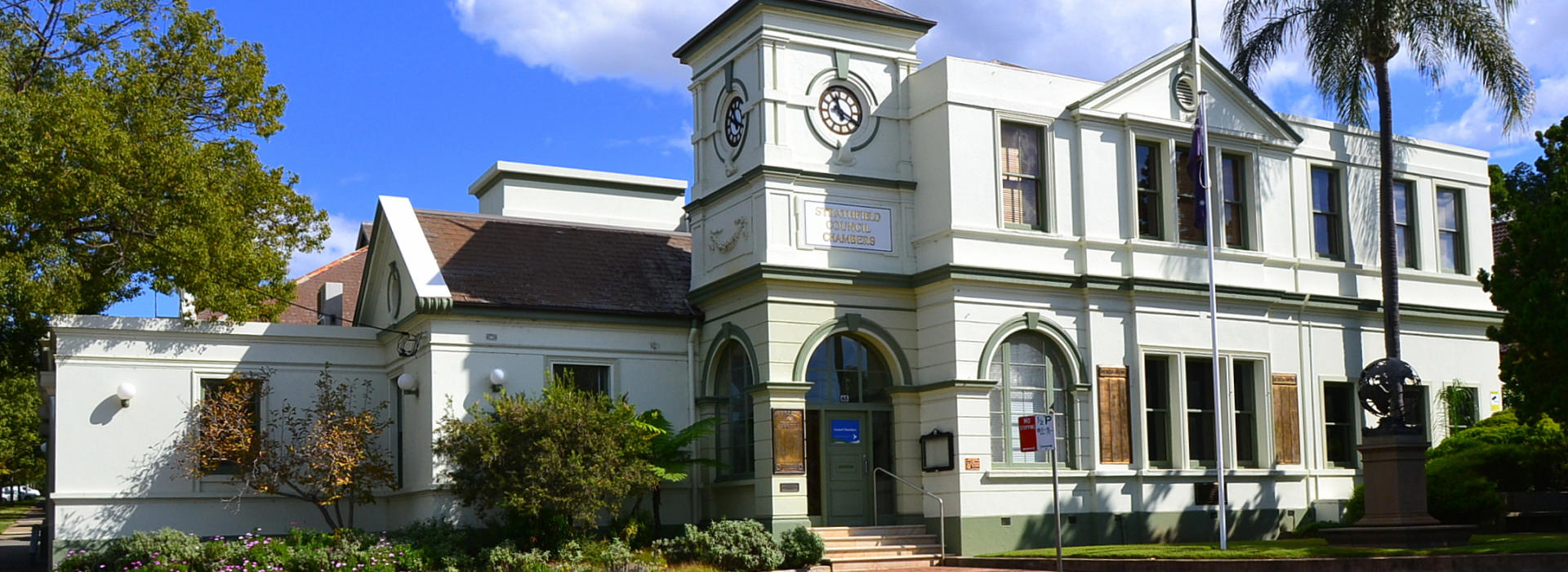
Weeds
In the Greater Sydney Region many parks and bushland reserves are under threat from a variety of invasive plants known as weeds. Most (66%) environmental weeds were introduced to Australia as garden plants.
Weeds generally grow vigorously and compete with desirable plants for light, space, nutrients and soil moisture. Weed infestations have the potential to completely change the natural character of our bushland reserves reducing the available habitat of many native plant and animal species.
Plants may be declared a priority weed if they pose a significant risk to human health, the environment, animals or the agricultural industry. Priority weeds are plants that must be controlled under the NSW Biosecurity Act 2015. It is the responsibility of the owners of private land as well as their occupants to ensure that reasonable and effective measures are taken to control infestations of weeds. Priority weeds can be determined on a State, Regional or Local level.
In NSW all plants are regulated with a general biosecurity duty to prevent, eliminate or minimise any biosecurity risk they may pose. Any person who deals with any plant, who knows (or ought to know) of any biosecurity risk, has a duty to ensure the risk is prevented, eliminated or minimised, so far as is reasonably practicable.
For an up to date list of plants that are priority weeds in the Strathfield local government area, visit the NSW WeedWise website and view priority weeds for the region of Greater Sydney. Alternatively, visit Sydney Weeds Network – Weeds of Sydney for weeds information in other languages including Chinese, Indian and Korean.
Currently there are no Local Priority Weeds declared for Strathfield local government area.
- Managing bush regeneration in significant natural areas in the Strathfield Municipality
- Working closely with the Sydney Weeds Network to control weeds on a regional basis
- Implementing Local and Regional Weed Management Plans developed by the Weeds Committees and the Department of Primary Industries
- Coordinating the Strathfield Council Bushcare program
- Carrying out weed control measures in Parks and Reserves
- Private property inspections and education regarding obligations under the NSW Biosecurity Act 2015 and Biosecurity Regulation 2017
- Promoting weed control in the Strathfield Community through displays, information sessions, local advertising and the distribution of brochures.
Spring is here! Watch out for overgrown vegetation in your property!
All landowners are responsible for maintaining the vegetation in good order and within their property boundaries, fence lines and nature strips.
As overgrown vegetation is a public health matter, council officers will respond to concerns about overgrown vegetation by inspecting properties, and they have the ability to serve notices and issue penalties where a property owner is non-compliant.
- Remove weeds using appropriate control measures in your garden
- Never dump garden waste in parks or bushland reserves
- Compost garden clippings at home or place in Council green-waste bins for collection
- Avoid over fertilising your garden as excess nutrients may wash into waterways promoting weed growth
- Replace undesirable plants with locally indigenous species — visit the Grow Me Instead website for NSW specific alternatives
- Join the Strathfield Council Bushcare program.
Do you have a weed problem in your Lawn?
First thing you need to do to identify weeds is to identify the type of Lawn you have. Experts can help with this if you are unsure, you can consult with a local gardener or garden centre.
Treatment
The type of weeds and lawn you have will dictate the most appropriate treatment methods and your personal preferences.
Chemicals – can be purchased from your local garden centre and used in conjunction with label directions.
Natural sprays – there are many natural sprays to remove weeds such as boiling water or vinegar. Be careful with these methods as they will kill your lawn if you are not careful and over spray.
Hand removal – this may require specific tools and removes any contact to chemicals. Also, a good way to get some exercise and vitamin D.
Be a good neighbour, weeds can spread from your lawn to your neighbour’s lawn if left unmaintained.
For more information, please refer to NSW WeedWise. This site lists over 300 weeds species that includes profile, control and legal requirements.
Council is recognised as a local control authority (LCA) under the Biosecurity Act 2015 and is responsible for the control or eradication of invasive weeds. As a local control authority Council’s responsibilities include but are not limited to:
- The inspection of properties
- Assistance with weed identification
- Provision of advice on weed eradication or control measures
- Notification of the presence and dangers of invasive weeds on both private and public lands.
Tools:
The Biosecurity Act 2015 includes a number of mechanisms (regulatory tools) that can be used to manage weeds in NSW, these are outlined below. The Biosecurity Act 2015 and Regulations provide specific legal requirements for high risk activities and state level priority weeds.
Prohibited Matter: biosecurity matter listed in Schedule 2, Part 1 of the NSW Biosecurity Act 2015 for the purpose of preventing entry of that matter into NSW or a part of NSW. Prohibited matter includes weeds nationally targeted for eradication and presently not in NSW.
Control Order: establishes one or more control zones and related measures to prevent, eliminate, minimise or manage a biosecurity risk or impact. Control orders are for managing weeds under approved eradication programs and last for five years (or can be renewed for longer-term eradication programs).
Biosecurity Zone: aims at containment of a species and provides for ongoing strategic management in a defined area of the state. A Biosecurity Zone specifies the measures that must be taken in the defined area to manage the weed. Species may also be subject to other measures tailored by the region either within the zone or outside it.
Mandatory Measures Regulation: requires parties to take specific actions with respect to weeds or carriers of weeds.
The management of weed species on public land will be conducted in areas where long-term control programs will deliver the greatest benefits to ensure the long term protection of Strathfield LGA’s natural ecosystems and habitat, public health and social amenity.
On public land with bushland, weeds will be priority managed where they are impacting on:
- Threatened species and wildlife corridors
- Areas that contain greater conservation value
- Council bushland maintained by Council staff, contractors and volunteers e.g. Bushcare programs
- Health and safety for recreation
In parks, reserves and sportsgrounds, weeds will be priority managed where they are impacting on
- Health and safety for recreational users
- Native vegetation or natural areas
- Aesthetic values
In road reserves, footpaths and carparks, weeds will be priority managed where they are impacting on:
- Vision of vehicular traffic
- Health and safety of pedestrians
- Native vegetation or natural areas
The control of weed species will conform to Council’s responsibilities under the relevant legislation.
- Weeds will be assessed on a risk base and in accordance with the General Biosecurity Duty, Mandatory measures, Greater Sydney Regional Strategic Weed Management Plan 2023-2027, Control Orders, Biosecurity Zones and Prohibited Matter.
- Weeds will potentially not be removed if the area is considered a low priority or if the weeds are providing important habitat to native fauna and their removal would negatively impact the wildlife.
Prevention of Further Spread of Weeds
To prevent the further spread of weeds, Council will:
- Ensure all works on Council lands do not include planting of invasive species or environmental weeds that may in the future be listed as weeds.
- Ensure landscape and erosion control materials used by Council (such as topsoil and straw bales etc.) are free of weed seeds and propagules.
- Ensure council staff and contractors do not discard vegetation material (e.g. lawn clippings) into natural areas.
- Investigate and prosecute illegal dumping in natural areas.
- Educate to prevent spread of weeds and their management.
- Monitor the presence and extent or spread of weeds in the Strathfield LGA.
- Council will not encourage the sale of weeds species in the cut flower or nursery industries.
Weeds of National Significance:
Under the National Weeds Strategy, 32 introduced plants have been identified as Weeds of National Significance (WONS). A list of 20 was endorsed in 1999 and a further 12 were added in 2012. These weeds are regarded as the worst weeds in Australia because of their invasiveness, potential for spread, and economic and environmental impacts. List of Weeds of National Significance.
National Environmental Alert List weeds:
Under the National Weeds Strategy, 28 environmental weeds were identified National Environmental Alert Weeds. Alert Weeds are non-native plant species that are in the early stages of establishment and have the potential to become a significant threat to biodiversity if they are not managed. List of National Environmental Alert Weeds.
Native plants considered weeds
Some Australian native plants have become invasive in areas beyond their natural range or habitat. This is partly due to their popularity as ornamental plants, and partly due to landscape changes. Many areas of native vegetation are protected in Australia. Always check native vegetation requirements before undertaking control of a weedy native plant.
Water weeds
Freshwater ecosystems are highly vulnerable to invasion by weeds. Many exotic plants have been accidentally or deliberately introduced into waterways in New South Wales, and have become widespread. Do not deal with these water plants in NSW.

